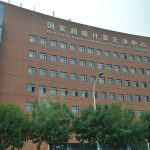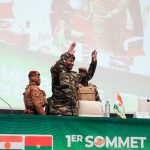As in Ukraine, Delhi tries to maintain a delicate balance between Washington and Beijing in Oceania. The Prime Minister of Papua New Guinea, James Marape, defined her as the “leader of the Southern Hemisphere”. For its part, India can sell cheap technology and exploit the presence of the diaspora, but the military commitment (for now) is left to the West.
Delhi () – The last two weeks have seen a series of dialogues by Indian diplomacy: Prime Minister Narendra Modi attended the G7 in Japan, then a summit between the leaders of the Quadrilateral Security Dialogue (Quad); in Australia he signed a series of deals with Prime Minister Anthony Albanese, while in the disputed region of Kashmir a tourism summit was held ahead of the G20.
In the midst of all these events, the visit to Papua New Guinea – the first by an Indian prime minister – for a meeting of the Indo-Pacific Cooperation Forum (FIPIC), which was initially to be attended by the president, faded into the background. American, Joe Biden, who was later recalled to his country due to the budget crisis. In his place, Secretary of State Antony Blinken led the US delegation.
At first glance, it is clear that the Pacific region is one of the buffer zones where frictions with China are now measured. The 14 Pacific islands with which Delhi began a slow dialogue in 2014 are “very strategic places if you want to establish a naval base, a friendly port or a friendly airstrip, and they also have vast ocean resources,” said the captain. Retired Navy Arun Prakash. “The main concern for Western countries and India is that many of these countries are a vacuum and China tends to go into the gaps and fill them.”
Delhi’s mediation with Port Moresby may be a connection for Washington after the military agreement that the Solomon Islands signed with Beijing and which alarmed the West.
India was hailed as the “leader of the Southern Hemisphere”, in the words of Papuan Prime Minister James Marape, according to whom Delhi is “the third great voice” that “must emerge” and behind which “the Pacific will unite”. As in the case of the war in Ukraine, Delhi presents itself as a new power that is not too unbalanced, closer to the interests of non-Western nations and willing to provide economic support in the fight against climate change, the main concern of the Pacific atolls that are at risk of disappearing due to rising sea levels. “One of the main challenges facing Papua New Guinea is climate change and adaptation. These are areas where India can play an important role by offering affordable partnerships in areas such as solar energy,” said Swati Prabhu, a researcher at Center for New Economic Diplomacy of New Delhi. Modi reiterated the same concept during the Indo-Pacific Cooperation Forum: “We are ready to share our capabilities and experiences in digital technology, space technology, health security, food security, climate change and environmental protection,” said the Indian Prime Minister. .
Meanwhile, Washington signed a defense deal with Port Moresby worth $45 million, which includes an increased US military presence on the island and development assistance. The United States will also provide coast guard patrols to monitor Papua New Guinea’s exclusive economic zone and combat illegal fishing activities. Faced with protests by university students against the agreement, Marape responded that “there is nothing to fear” because the agreement “has nothing to do with China,” which remains “an important trading partner.”
In this context, India presents itself as a reassuring power in the region, where it can also take advantage of the presence of the diaspora: in Papua New Guinea, which has a population of 9.5 million, there are about 3,000 Indians, while in Fiji 38% of the population is of Indian origin. This is a migration that dates back to colonial times, and currently amounts to 320,000 people according to figures from the Indian Ministry of Foreign Affairs: India has already taken advantage of this advantage in the past to sign economic agreements and now has every interest in expand them. The Pacific islands are surrounded by a maritime zone of 40 million square kilometers and have exclusive economic zones larger than those of India.
However, Indian influence in the Pacific has its limits, according to analysts: India currently lacks the military capabilities of other Western countries and cannot match China’s resources: “If you consider yourself an Indo-Pacific power and ways part of the Quad group, you have to reach the Pacific as well. But whether we have the ability to stay that far into the Pacific is anyone’s guess. We don’t have that deep pockets and even our navy is relatively small,” said former naval captain Prakash. “But maybe in coordination with Japan, Australia and the United States, we can help there.”
“INDIAN MANDALA” IS THE NEWSLETTER OF ASIAN NEWS DEDICATED TO INDIA.
WOULD YOU LIKE TO RECEIVE IT EVERY FRIDAY IN YOUR EMAIL? SUBSCRIBE TO THE NEWSLETTER AT THIS LINK.











